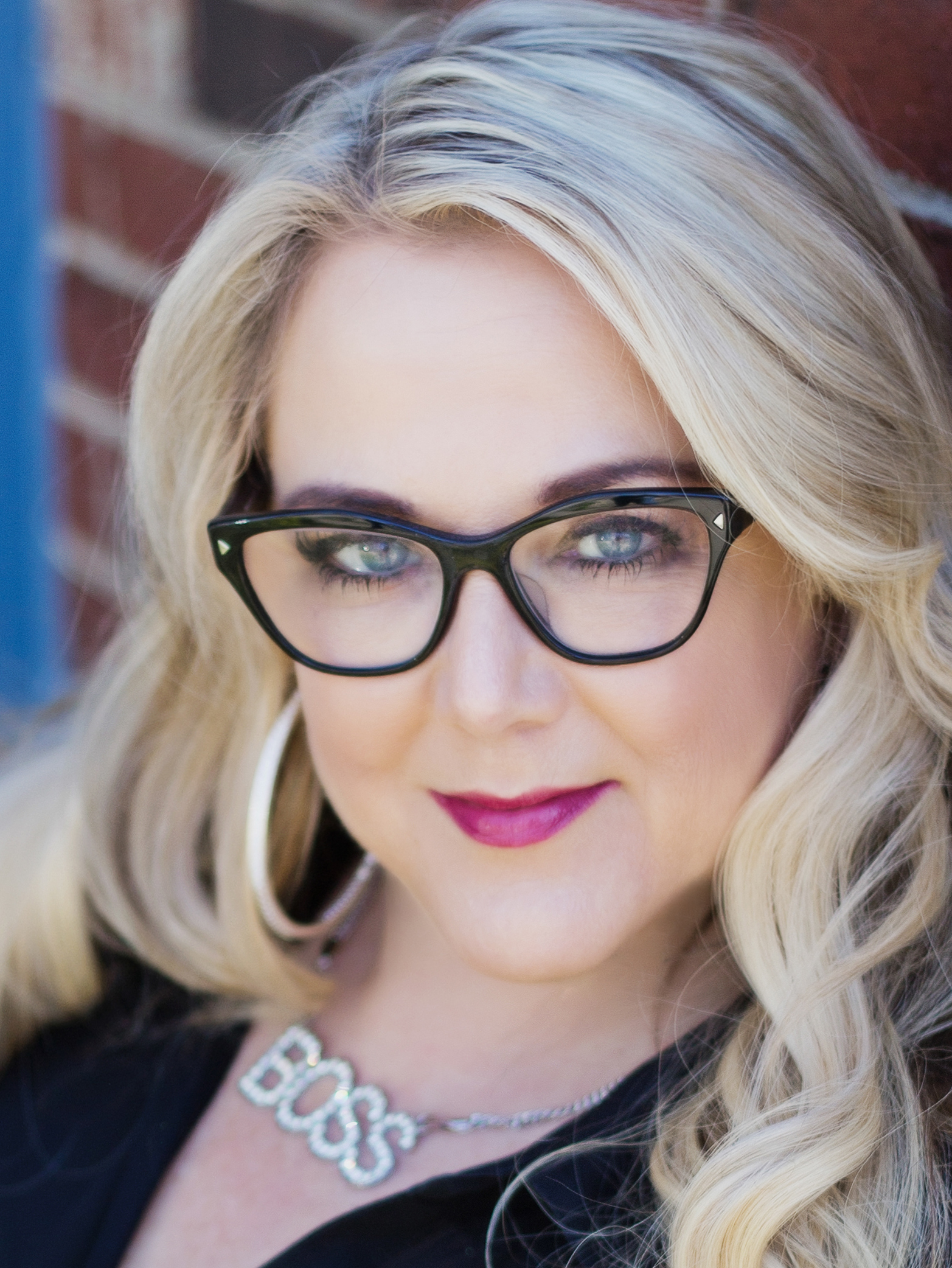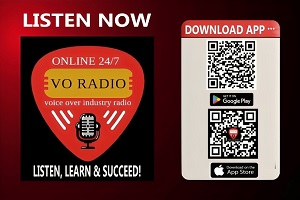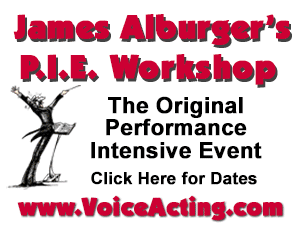|
VOICE ACTING This Is 'The Best Corporate Video EVER.' Why? Break It Down As A Valuable Voice Over Lesson  By Anne Ganguzza By Anne GanguzzaVoice Actor, Coach, Demo Producer Since 2010, the Cannes Corporate Media Awards have featured the very best in corporate media and TV. As a Corporate Narration "enthusiast," I regularly visit their website to watch videos and study the latest trends and voice over styles that inspire great global media content. This helps me to be a better voice talent, as well as helping my voice over students, as I am constantly discovering and learning new trends and nuances that make up the market. Recently, I came across a video that has quickly become a favorite of mine from Bystronic, a global sheet metal fabrication company based in Switzerland. Their corporate video was featured as a Gold Winner for Best Corporate Image Film. But there is so much more to this winner than just good cinematography and sound. There were LESSONS. OMGosh - I LOVE lessons! So many to be learned! Let's break it down. You have to see it to believe it. :) Take a look: Another Day at the Office :00-:37 When it comes to corporate videos, this is a common "Who we Are/What We Do" piece of copy, and for the first 37 seconds, it seems fairly standard. Par for the course really. We have a nice establishing drone shot with some driving music and flashy video editing. Then the voice over comes in with a somewhat formal and intense read. While this style of VO was a standard "Industrial" style read many years ago, it's not as relevant or as effective anymore with the smart and savvy consumer of today. The story of the company is lost in the drama of the read. The over articulation of the script overshadows the nuanced - but very clear emotion of company pride. Yes, even bland text of corporate copy can blossom with an emotional backstory to make it more engaging and interesting for the listener. That's what differentiates great corporate videos these days. And that is really hard to convey when the focus of the voice actor is making sure his voice sounds "confident" (or "pretty" as I like to say). But ... Then Magic Happens :37-:1:22 Fourth wall be damned, it's time to take us, the viewer, through the (studio) looking glass. LOL First things first. Make sure you HYDRATE. You certainly don't want a dry mouth or anything else to impede your ability to tell the story. And by the way, I have a great Throat Spray for you in case you need a quick fix - I know I know - shameless self-promotion. :) The flow of the video is abruptly stopped, and we're given a behind-the-scenes look at our "very confident" VO talent. Don't get me wrong, a level of confidence is great when it comes to voicing the script as a "storyteller" of the company or confidence that comes from the assurance that you are making the client happy. However, arrogance toward the producer or client can just turn them off to you, beautiful voice or not. At :56, when the director asks for more "verve" it's your job as the VO to take good direction and step up your game as requested. This is not a time for talkback or excuses. And as good as your engineer is, there is no magic that will be able to add emotion or passion to your narration. Do it right while you're in the booth, it's your job. At 1:15 – It's always a good idea to ask for clarification if you're not sure about things, just don't belittle the copywriter or client along the way. On the JOB1 :22 - 2:50 At 1:26 we get a great reminder of what it means for a VO talent to "do their job." Your job is to know your client. Study them. It's more than just knowing what you're talking about. You have to know why you're talking about it.
In this case, when the client gets up to speak at 1:26 he is our subtext, our research, our backstory, if you will. He is an embodiment of the work that we as voice actors need to have prepared. The client is passionate about the company and believes in the work right down to his bones. He understands the detail and connects to every emotion. Notice that when the client is speaking, he is speaking to one person at a time. He's not addressing "the room," he is talking directly to someone. There is intention and reactions as if this one-on-one interaction is a conversation, even though it's a monologue. And last but by no means least - he is pyhsicating. (Especially the part when he is listing and counting on his fingers - a tip I always tell my students about to help them sound realistic through a list). This helps him to tell the story and dissipate the energy in a realistic manner, instead of standing stiffly behind the mic and using just his mouth to tell the story. He is using his entire body - hands, face shoulders, etc. Notice how engaged the two listeners are in the booth are when he tells the story! Just like your listeners will be when you engage them like that. 1:46: By the way, if you are in a session, and the client changes the script, be sure to let your agent know. Just don't be a jerk about it. 2:31: Again - Mind your booth etiquette and never insult the copywriter. Remember, it's your JOB to know the product, tell the story, and make the copy sound beautiful, even when it may not be Pulitzer prize-winning material. Know the Bones, Find the Spine of the Story 2:50 - 3:48 Here we go. This is the heart of the story, as well as the video. As listeners, we are being invited along the journey. We are not being "formally" read to, we're a part of the ebb and flow of the story and truly understanding what this company is all about. Our narrator is passionately unfolding layers upon layers of information that teaches us exactly what we need to know about Bystronic. Every narration has a story. It's not just your job to find that story, but to also find the story arcs.
You have to understand the beats, the melody, and the rhythm of the copy. And here's another great example of physicating to help with authenticity: Pointing at objects, gesturing with your hands, all of this keeps the copy believable while helping you with distributing your vocal energy in a very real way. Physiciation is the anchor that the passion needs to stay believable. 'Bless You, Katie' 3:33 At three minutes and thirty-three seconds in the video, our client/narrator kisses his wedding ring, and utters the words "Bless you Katie." While this is just an aside, it helps to set up the long term commitment part of the copy, and it also teaches us another important VO lesson: We are voice actors. Our job is to act. This is why training and coaching are so important in helping us be great voice over actors.
When our narrator kissed his ring, it reminded me of the Stanislavski method of "Emotional memory." If you don't know what that is, it's worth looking up. While you're at it, do some research on Strasberg, Meisner, Uta Hagen, Stella Adler and Viola Spolin. Understanding and practicing these acting methods will keep your reads honest, believable, and full of genuine emotion. The Story is What You Make It 3:48 - 4:45 When we return to the corporate imagery, and our client is narrating, our story is firing on all cylinders. It's like the other narrator didn't even exist. What makes our client's narration amazing is that he is focused on the story, he's immersed in it 100%. He has passion and subtext. He is genuine and conversational. You believe every word that comes out of his mouth. His energy ebbs and flows. He finds the crescendos of the story. As a listener, I feel I am a part of the conversation, he is talking directly to ME, and paying attention to my reactions. He isn't worried whether his voice sounds good or not. He isn't trying to just punch the right words. He's just telling the story. And it's working. The bonus is that if you can connect to the copy and voice authentically, I promise you - it will work with any video footage and any music bed - dramatic and loud, or quiet and serene. WHEN YOU 'FEEL' IT Just like Bystronic's tag line, "Best Choice," the best choice for your read will come when you "feel" it. It's how you know when you have connected to the copy and told the story. It's not about the sound of your voice as you read words on a page. It's a confidence you feel when you know that your listener has had an emotional reaction to the story you have helped to tell. They feel your story as well as understand the message of the company. It comes from being prepared, having the right coaching and practice, and being able to execute when you're asked to step up to the microphone. I encourage you to listen to the differences between the voice talent at the beginning of the video and the impassioned client. Listen. And keep listening and practicing. I'm confident it will improve your read! And congrats to Bystronic and producers Beck and Friends for their truly amazing work and great content that inspired this article. -------------------- ABOUT ANNE Anne
Ganguzza is a full-time voice talent and award-winning director and
producer who works with students to develop their voice over and
business skills - including VO demo training and production. She
specializes in Conversational Commercial and Narration styles, including
Corporate, E-Learning, Technology, Healthcare - Medical, Telephony, and
On-Hold. Located in Orange County, CA, Anne offers private coaching and
mentoring services to students in person and via Skype, ipDTL or Zoom. Email: anne@anneganguzza.com Web: www.AnneGanguzza.com |
|
|
Get your bi-weekly dose here ... all things VO!
For essential voice-over business strategies
On Michael Langsner's Voice-Over Roadmap Podcast
With Sean Daeley and Paul Stefano - check it out!
As of the NEW website launch, 03/22/2012










And well done all those wonderful British Actors ;-)
The VO in the booth made me giggle:) Seriously, this is a brilliant article - you always hit the right points in your "Boss"casts and any other articles - I'm always keen to read any of your posts.
Thanks for sharing your knowledge.